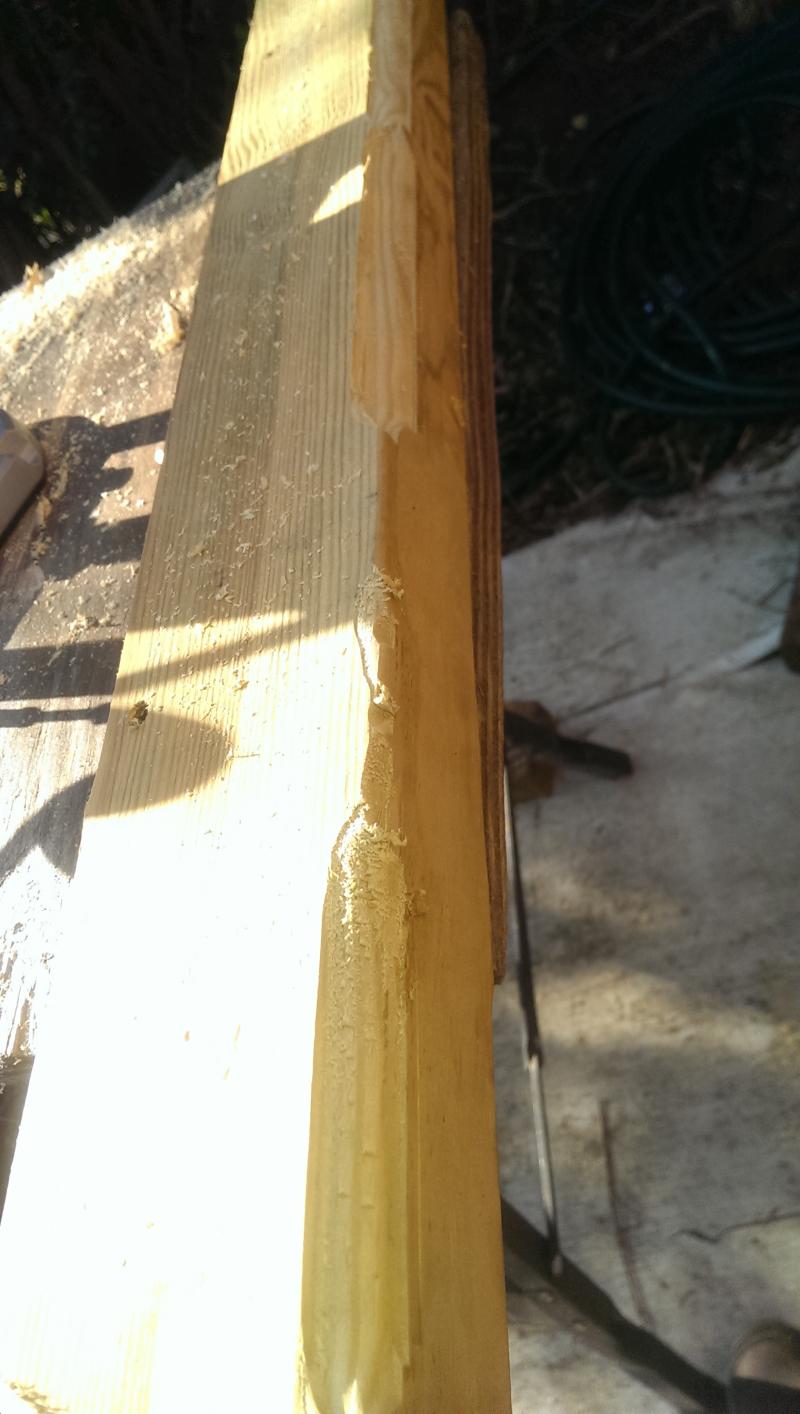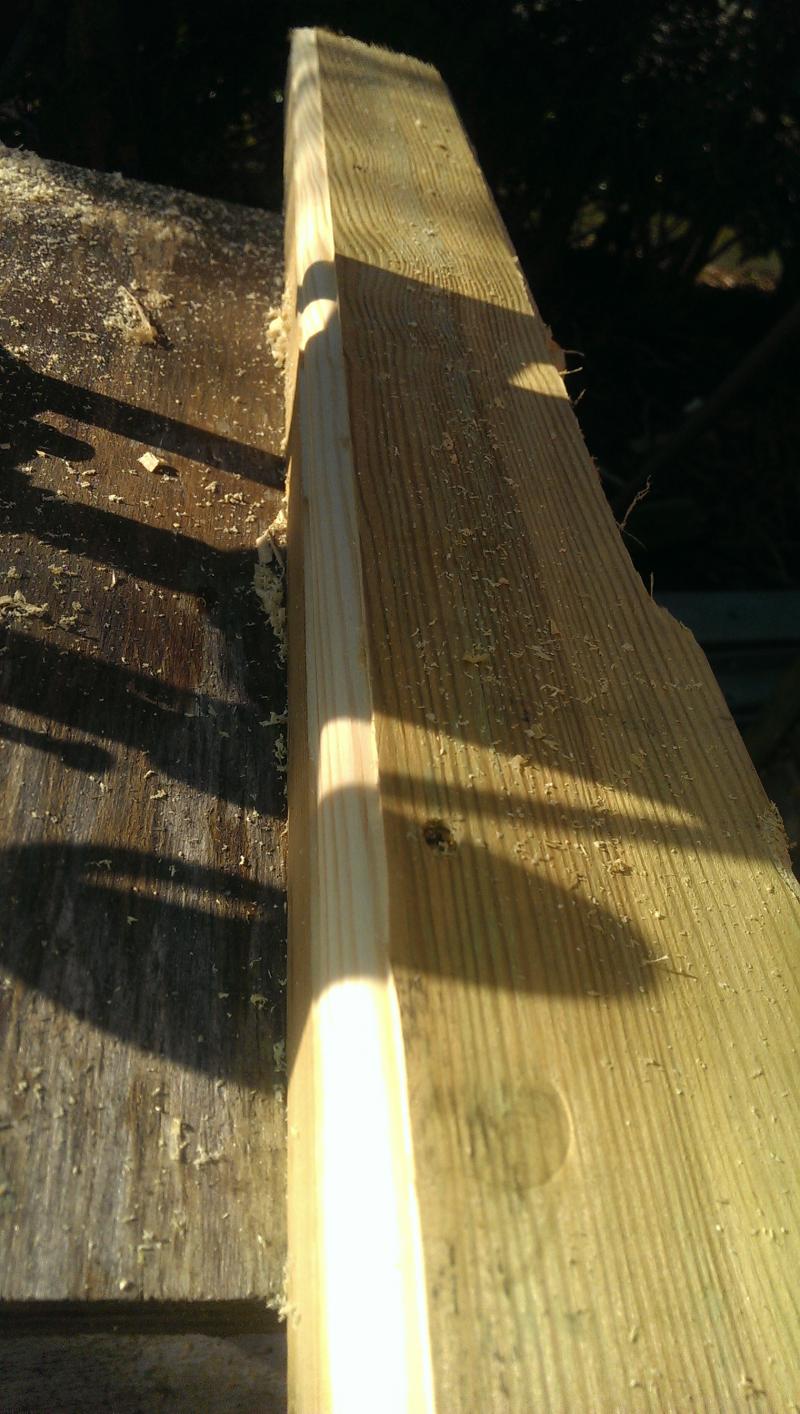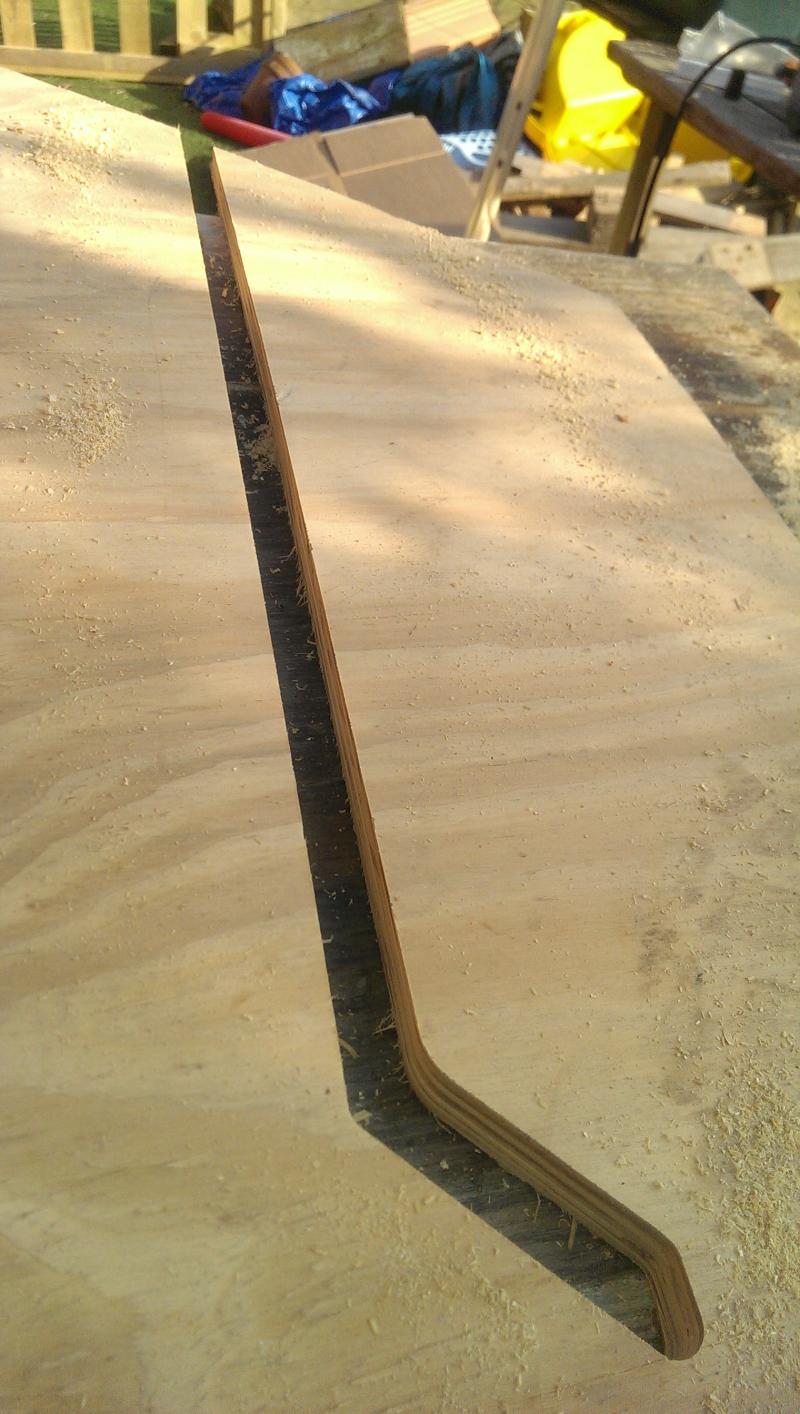Ok guys, I have little to compare to but here are my thoughts initially on m12. After spending most of sunday cleaning out my shed/ workshop I finally found time and space to unleash the beast, after fitting an edging bit with no real problems other than worrying about overtightening it I donned my glasses, clamped a bit of 2x4 and turned her on.
A little nervous and a lot excited at this point, my first thought was blimey how smooth and quiet it seemed. Albeit at slow speed. Even the cat did not seem to bothered.
So I put her to the test on the 2x4. I was a little worried for a sec as the bit stopped turning, chewed up the wood and didn't feel good. So after (unplugging) and tightening up the bit and adjusting the depth i tried again. This time with little more speed and achieved a fairly smooth straight cut all round sides.
😆😁😀 Happy man, (supposed to be beer here?) J&K this ones for you, and im away.
I then worked through my 4 bits so far. I tried a miter cut from my rouge jig, up and down both sides. I then used biscuit cutter to join these two together. this is tricky since i haven't worked out an efficient way of measuring and cutting the right width, but with a little help im sure that will come👍😊
I then used my drainage jig and core box cutter (all these are 1/2'') to test on some pine board. First cut smooth but shallow, 2nd too deep, need more practice but happy that they are smoth and true, finally I used 60mm straight flute to cut straight edge simulating the worktop square cut. I cut the end, about 6-8MM off. Achieved a beautifull straight cut with no burning or roughness.
All in all I love it, and cant wait to get some more bits to practice. (To buy cheap set to practice or not?)
My only frustration now is that I cannot find a mounting plate that says it is compatible? I will be building a table soon, but despite the many different designs and guides I really dont know what is essential to include, particuly for my model. I am thinking, table, hole in and something to screw it onto, then guide rail.
I would love any feedback guys on this. I will eventually attempt to make new cuboard doors for kitchen on it.
first pic is first cut, disaster but quickly improved. 😄
👍
K





